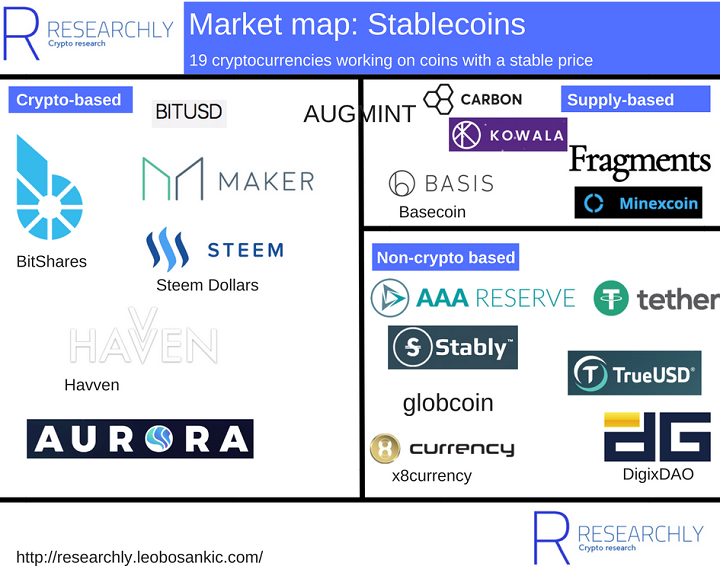Volatility is ubiquitous in the world of cryptocurrencies. The prices of cryptocurrencies swing wildly, sometimes within a 24-hour period. As a result, some cryptocurrency projects have attempted to create the so-called “stablecoin.”
The Need for Stablecoins
The price volatility of crypto species is anathema to many conservative mainstream investors. Wild price swings pose significant risks to profits and the security of funds. Crypto startups are also greatly affected by volatility. A company may conduct its ICO, raising $1 million in XYZ tokens. By the following week, XYZ tokens can decline by 50 percent, putting the company’s plans at risk.
One of the pillars of success of a business is the ability to forecast expenses accurately. With volatile crypto prices, cost forecasts become virtually impossible. Thus, the need for stablecoins; cryptocurrencies whose values are tethered to external assets, thus providing some form of stability, has become a much sought-after solution in the crypto ecosystem.
How Stablecoins Work
At its basic level, a stablecoin is a cryptocurrency that maintains a steady value based on an external asset. This external asset can be a fiat currency like the USD, or another crypto like ETH, or a set of smart contract protocols. The purpose of these external assets in the stablecoin paradigm is to create a monetary policy that controls supply, which keeps the value of the stablecoin fixed.
Based on the three types of assets mentioned above, there are three classes of stablecoins: fiat-collateralized, crypto-collateralized, and non-collateralized. According to Leo Bosankic, there are about 19 stablecoin cryptocurrency projects in existence which include Tether, TrueUSD, Basecoin, and BitShares. Others also include Stably, Kowala, and BitUSD.
For collateralized stablecoins, each coin in existence is theoretically backed by an equivalent or higher number of fiat or cryptocurrency. By so doing, liquidity is never a problem, and the principle of the coin holding a stable value vis-à-vis the fiat/crypto holds true. In a recent interview with Bitcoinist, co-founder and CTO of TrustToken, Rafael Cosman explained the economics behind TrueUSD. According to him, the “minting” of new TrueUSD coins is based on the availability of a corresponding fiat amount in the custody of the escrow account of its partners.
In the case of crypto-collateralized stablecoins, a higher amount of the crypto on which the stablecoin is based must be held to ensure stability. Thus, even if the base cryptocurrency depreciates, there is still excess volume to counteract the devaluation. Non-collateralized stablecoins depend on complex mathematics and computer algorithms to maintain stability.
Drawbacks of Stablecoin Tokenomics
Critics like Haseeb Qureshi and Preston Byrne believe that stablecoins are not sustainable. Most people who don’t believe in stablecoins point to the historical failures of governments that have tried to tether their national currency to other currencies like the USD. Qureshi succinctly details the drawbacks of three classes of stablecoins, saying:
Fiat-collateralized requires you to trust a centralized third party to hold your dollars (or euros).
Crypto-collateralized creates a dependency on the stability of the cryptocurrency on the other side of the equation.
Non-collateralized requires continual network growth in the form of new investors who can provide capital to support a falling currency value.
Taking crypto-collateralized stablecoins as a point of reference, the excess amount of the base crypto only offers protection against its devaluation up to a certain point. What if the base crypto declines by a percentage that is above the amount by which it exceeds the stablecoins? This point is described as the “black swan territory.”
The jury is still out on whether the idea of a stablecoin has merits or is another failed crypto experiment. One thing is sure, the industry as a whole would benefit from less uncertainty on account of the volatility of cryptocurrencies.
Do you think that stablecoins are reliable? Keep the conversation going in the comment section below.
Images courtesy of leobasankic.com, Shutterstock












